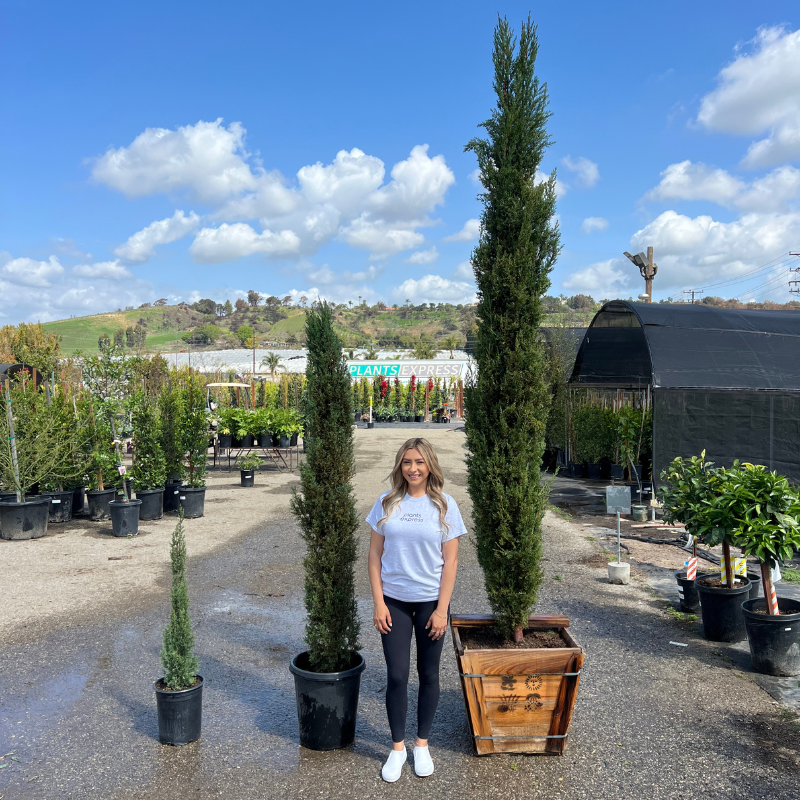
Italian Cypress
Cupressus sempervirens
Delivery
24-hour money-back guarantee
Free delivery on orders over $349
Big Project? Call 888-444-1126 for bulk rates!
Cupressus sempervirens, or Italian Cypress, is a popular evergreen tree that adds vertical interest to gardens. Its tall, narrow form and dark blue-green foliage make it suitable for privacy screens, borders, and windbreaks, while also adding structure to formal garden designs. Drought-tolerant, low-maintenance, and easy to grow, Italian Cypress is an iconic Mediterranean beauty that thrives in the California landscape.
Italian Cypress is a long-lived conifer that thrives in both coastal and inland climates. Known for its ability to withstand heat and wind, this dense, upright, columnar tree is also known as Mediterranean Cypress, Pencil Pine Cypress, Tuscan Cypress, or Cupressus sempervirens ‘Glauca’. It can grow to heights of 60-80 feet or more. Once established, and under optimal conditions, this fast-growing cypress may grow 2-3 feet per year.
How tall do Italian Cypress trees grow?
How tall are the 5, 15, and 25-gallon Italian Cypress when delivered?
What kind of light and soil do they prefer?
How drought-tolerant are they?
Over 60 ft.
6-10 ft.
Low
Birds
Perfect Your Landscape With Expert Help
Customize your yard with confidence. Schedule your free consultation today and bring your outdoor space to life!




